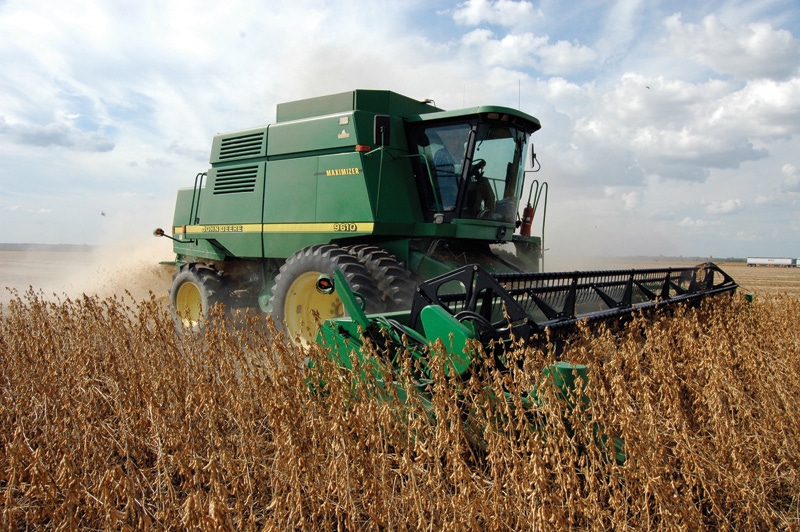January 6, 2016

U.S. farmers produced big corn and soybean yields in 2015 that could keep supplies burdensome in the coming year, according to Farm Futures final survey of production. USDA updates its production estimate Jan. 12, when Dec. 1 Grain Stocks and Winter Wheat Seedings reports are also released.
For corn, the Farm Futures survey estimates the crop at 13.57 billion bushels, less than achieved the past two years but still the third biggest crop ever. USDA previously said the corn crop would come in at 13.654 billion bushels.
Farm Futures survey of more than 1,550 farmers put yields at 169.1 bushels per acre (bpa), down slightly from USDA’s last estimate, with harvested acreage of 80.27 million nearly 400,000 less.
Soybean numbers headed in the other direction, though not dramatically so. The magazine put production at 3.986 billion bushels, a record if achieved, but only 5 million more than USDA’s current estimate. Farm Futures found harvested acreage rising by 280,000 to 82.709 million, though yields of 48.2 bpa were down slightly from USDA’s last guess.
“These numbers wouldn’t do much to change the bearish mood of the markets,” says Bryce Knorr, Farm Futures senior grain market analyst. “The corn production estimate is a little supportive, but probably not enough to turn the market around on its own. For that to happen, demand must improve.”
Feed and industrial usage could be a little better than expected when grain stocks data is updated Jan. 12. But those gains could be partly offset by weaker exports. Overall Knorr sees 2015 ending stocks at 1.642 billion, down 143 million from USDA’s December report.
In addition to slightly larger supplies, soybean stocks could be swelled by demand that isn’t quite as good as first expected. Modestly weaker crush and exports could result in 2015 ending stocks rising to 492 million, 27 million more than USDA’s December number.
“A huge crop is coming on in South America, and flooding on the U.S. river system could slow late season exports,” Knorr said. “Chinese demand also may not return after the Lunar New Year holidays in February.”
Farm Futures’ second survey of winter wheat seedings found little overall change, though there were regional shifts. Growers said they planted 39.46 million acres of winter wheat, little changed from levels sown for harvest in 2015. But hard red winter wheat acreage fell to 27.6 million, a 5 percent drop from 2015. Soft red winter wheat ground rose 20% to 8.54 million, while white wheat slipped around 2% to 3.343 million.
Farm Futures surveyed growers Dec. 11, 2015, to Jan. 4, 2016. Respondents received an email link to an online survey.
You May Also Like




